Your competitors are outranking you on Google Maps. Not because they’re better businesses. Not because they’ve been around longer. But because they understand something you don’t: Google reviews aren’t just nice-to-haves—they’re the difference between showing up in the local 3-pack or not showing up at all.
Let me give it to you straight: If you’re not actively managing your online reviews in 2025, you’re handing customers to your competition on a silver platter.
TL;DR: What You Need to Know Right Now
Google reviews account for approximately 15-16% of local search rankings—making them one of the most powerful ranking factors you can actually control. Here’s what matters:
- The first 10 reviews matter most for ranking boosts, with another significant bump at 100 reviews
- Fresh reviews beat old reviews: Review velocity and recency directly impact your visibility
- Response rate matters: Businesses that respond to all reviews see 12% more review volume and better rankings
- Star ratings influence click-through rates by up to 25%: Moving from 3 to 5 stars dramatically increases customer conversions
- Review content contains keywords: Customer reviews naturally include search terms Google uses for ranking

The bottom line?
Reviews are the fastest, most cost-effective way to improve your local SEO rankings—if you know how to leverage them correctly.
Read also: Fake Reviews and Local SEO: What You Need to Know.
Why Your Local Business Can’t Ignore This
Look, I’ll be blunt: Reviews account for about 15.44% of Google’s local business rankings.
That’s massive.
To put this in perspective, that’s more influential than most technical SEO factors business owners spend thousands fixing.
Think about what that means for your business:
A plumber in Dallas with 150 five-star reviews and active response management can outrank a competitor with better website design, more backlinks, and even a better physical location—purely based on review signals and customer trust indicators.
This isn’t theory.
96% of consumers read reviews for local businesses.
When someone searches “emergency plumber near me” at 2 AM with a burst pipe, they’re choosing based on what other customers say about you, not your fancy website copy.
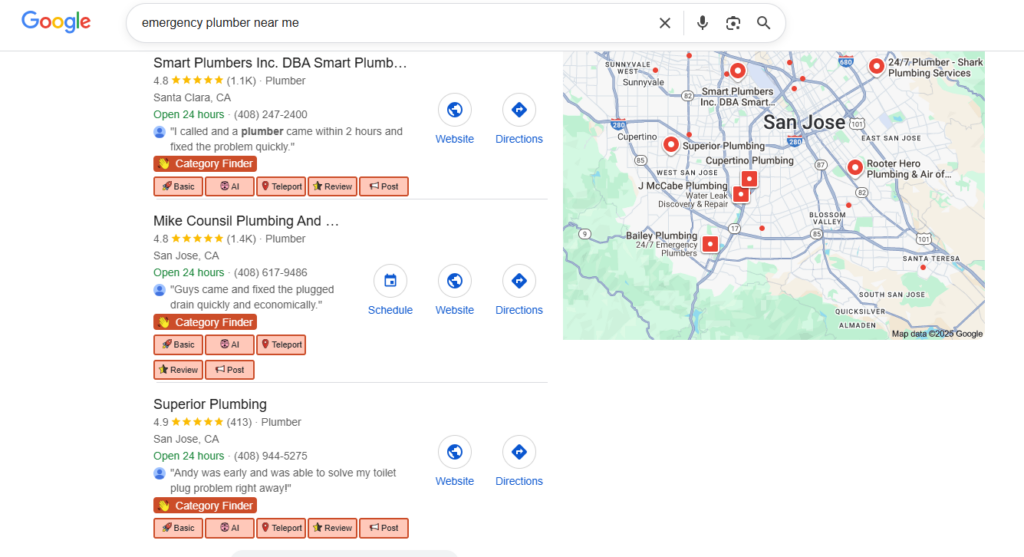
And here’s where it gets interesting for your bottom line: 92% of consumers will use a local business if it has at least a 4-star rating.
Drop below that threshold?
You’ve lost 92% of potential customers before they even call you.
This is where professional local SEO services become worth their weight in gold—because managing review generation, response strategies, and reputation monitoring at scale isn’t just about rankings. It’s about survival.
How Google Actually Uses Reviews to Rank Your Business
Google doesn’t rank businesses randomly. Google looks at three core elements: relevance, proximity, and prominence.
Reviews are a prominence-based ranking factor.
Here’s what prominence means in plain English: How well-known and trustworthy is your business?
Google evaluates this through multiple review signals:
Review Quantity (But Not How You Think)
Getting your first 10 reviews can give your rankings a solid lift—Google starts seeing your business as more trustworthy and relevant.
Hitting the 100-review milestone brings another noticeable boost.
But beyond that, piling on more reviews won’t necessarily move the needle.
Let me give you an example.
We recently helped a family-owned Italian restaurant in Chicago go from invisible on Google Maps to ranking #2 in their area within 90 days.
They didn’t change their food, didn’t renovate, didn’t even update their website. They went from 6 reviews to 47 reviews—all authentic, all from real customers they’d been serving for years but never asked for feedback.
Review Recency and Velocity
This is huge and most business owners completely miss it.
Google reviews play a major role in map pack rankings, and yet many businesses still underestimate just how much they matter.
By consistently earning new, high-quality reviews and keeping the momentum going, you can dramatically improve your local visibility and stay competitive in your market.
Translation: A steady stream of recent reviews beats a large volume of old reviews every single time.
Think about it from Google’s perspective—they want to show customers businesses that are currently delivering great service, not ones that were good five years ago but have since declined.
Contractor example: An HVAC company in Phoenix maintained a review generation system that brought in 2-3 new reviews per week. Their competitor had 200 total reviews but hadn’t received one in 6 months.
The HVAC company with consistent new reviews ranked higher despite having fewer total reviews.
Why?
Google’s algorithm interpreted fresh feedback as a signal of current quality and active customer engagement.
Review Content and Keywords
Here’s something most people don’t realize: When customers use relevant keywords in their reviews, it can help search engines understand the business’s offerings and relevance.
When a customer writes “John’s Automotive did an amazing brake repair and the oil change was super fast,” Google reads those service-specific terms.
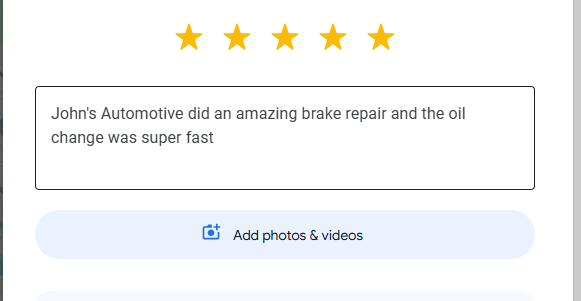
That review helps you rank for “brake repair” and “oil change” searches in your area.
This is organic, authentic keyword optimization that no SEO agency could replicate—because it’s real customers using real language to describe real experiences.
Star Ratings and Click-Through Rates
Past studies have captured as much as a 25% CTR increase when a Google Business Profile moves up from a 3-star to a 5-star average rating.
Let that sink in.
Same ranking position, 25% more clicks, just from better ratings.
Here’s the math:
If you’re getting 1,000 views per month on Google and your star rating increases from 3.8 to 4.7 stars, you could see 250 additional clicks. If your conversion rate is 10%, that’s 25 new customers per month. For a service business averaging $500 per customer, that’s $12,500 in monthly revenue—$150,000 annually—just from better reviews.
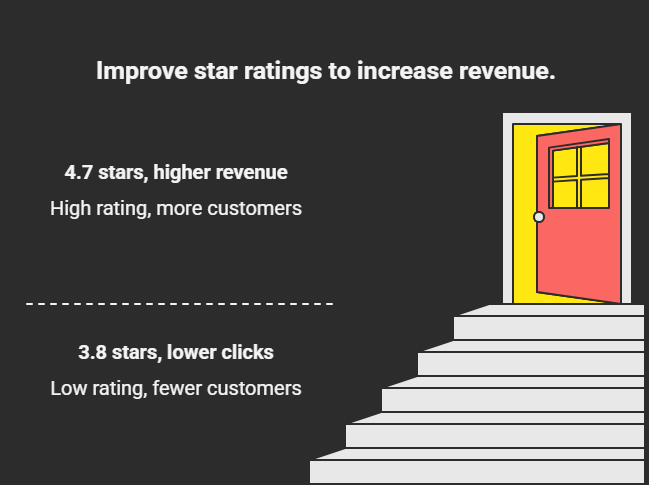
And this compounds because 72% of consumers will convert to customers only after reading a positive review.
The Review Response Strategy Nobody’s Talking About
Most business owners think responding to reviews is just good customer service. They’re not wrong, but they’re missing the bigger picture.
By engaging with customer reviews, businesses can improve their local search rankings, as Google encourages responses to enhance business visibility and credibility.
But here’s the money shot:
A Harvard Business Review study of hotel reviews on TripAdvisor found that when hotels started responding to them, they received 12% more reviews and their ratings increased by an average of 0.12 stars.
12% more reviews.
That’s free customer acquisition working in the background while you’re running your business.
Response Rate Directly Impacts Rankings
Consumers are twice as likely to use a business that responds to all reviews than one that doesn’t respond to any.
Think about what this means competitively.
If you’re responding to every review and your competitor ignores theirs, you’re literally doubling your chances of winning that customer—before they even walk through your door or pick up the phone.
Here’s a message we from a restaurant owner:
“We started responding to every single Google review—good, bad, or neutral—in January. By March, we’d climbed from position 8 to position 3 in our category. We didn’t change anything else. Just responses. Our bookings increased 34% in that quarter.”
Speed Matters
36% of your customers expect a response within 1 day, and 30% want to hear back within 3 days.
Here’s where most businesses fail:
They respond to negative reviews immediately (panic mode) but ignore positive ones for weeks. Big mistake.
Positive review responses are easier to write, take less time, and encourage more customers to leave reviews in the future. Prioritizing responses to positive reviews can drive immediate improvements in ratings, while addressing negative feedback requires a long-term approach focused on trust-building rather than quick fixes.
What About Negative Reviews? (The Truth Nobody Wants to Hear)
Here’s the uncomfortable truth:
Negative reviews aren’t killing your business—how you respond to them is.
When complaints are resolved, many customers will trust the business for subsequent transactions. And some will update their negative ratings to reflect an improved experience.
I’ve seen businesses turn 1-star reviews into 5-star reviews just by responding professionally and offering to make things right.
We worked with a dentist who had received a scathing 1-star review about wait times.
Instead of getting defensive, they responded publicly acknowledging the issue, explained they’d just lost a hygienist, and offered the reviewer a free cleaning.
The reviewer updated their review to 4 stars and mentioned the owner’s professionalism in handling complaints.
That exchange was visible to every future potential patient researching that practice.
It can take up to 40 or so good reviews to offset a bad one, so businesses need to immediately address negative feedback, responding to negative reviews to resolve customer issues and implementing business changes to mitigate further negative impacts.
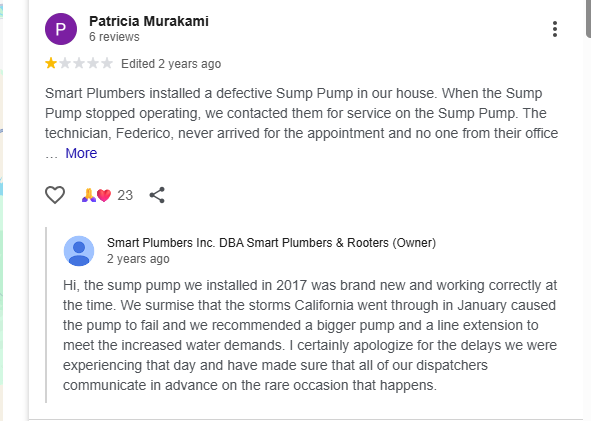
But here’s the thing:
You can’t get 40 good reviews quickly unless you have a system. This is where implementing a structured local SEO strategy that includes automated review generation pays massive dividends.
How to Actually Get More Google Reviews (Without Being Sleazy)
Let me be crystal clear: Google does not allow businesses to incentivize customers for positive reviews. It is directly against their Google review guidelines, as this can be considered “deceptive content” if the customer was paid or incentivized in any way to leave the review.
So what actually works?
a). The Timing Method
Ask for reviews immediately after delivering exceptional service—when the positive experience is fresh. For restaurants, that’s right after the meal. For contractors, that’s when you complete the job and they see the results. For lawyers, that’s after you win their case.
The key insight: 32% of consumers would write more local business reviews but businesses aren’t asking them to.
Your customers want to help you. They just need to be asked.
b). The Multi-Channel Approach
Using a combination of SMS and email to send review requests generates more reviews than either SMS or email alone—earning a 26% return by generating around 26 reviews per 100 requests sent.
SMS gets opened faster. Email provides more context and a clickable link. Use both.
c). Make It Stupidly Easy
Every extra click you add to the review process cuts your completion rate in half. Create a direct Google review link (yes, these exist) and text or email it directly to customers.
Auto repair shop example:
They reduced their review link to a QR code displayed at the checkout counter. “Scan to leave us a review—it takes 60 seconds and means the world to us.” Their review volume increased 3x in 30 days.
The AI and Fake Review Problem You Need to Understand
Recently, Google announced that it is using Gemini AI to better detect review spam, citing a 40% increase in review removal in 2024 vs. 2023.
Translation: Buying fake reviews will destroy your business faster than having no reviews at all.
83% of consumers say they would avoid a business that engages in fake reviews practice had they known that.
And Google is getting better at detecting them every single day. Google is also rolling out “consumer alerts” on business profiles to try and promote transparency of possible fake review activity. The label will say something like, “Suspected fake reviews were recently removed from this profile.”
That label is a death sentence for your business.
Don’t risk it.
Ever.
The short-term ranking boost isn’t worth the permanent reputation damage.
The ROI Reality Check: Is This Actually Worth Your Time?
Let’s do real math for a local service business:
Scenario: You’re a home remodeling contractor averaging $15,000 per project.
- Current state: 23 reviews, 4.2-star average, ranking position 6-8 in local pack
- After implementing review strategy for 6 months: 89 reviews, 4.7-star average, ranking position 2-3
Conservative estimate of impact:
- 300% increase in Google Business Profile visibility
- 25% increase in click-through rate from better star rating
- 50% more qualified leads from higher rankings
- Result: 8 additional projects per year = $120,000 in revenue
Time investment: 15 minutes per day responding to reviews and sending review requests.
That’s $222 per hour of return on your time. Show me another marketing activity with that kind of ROI.
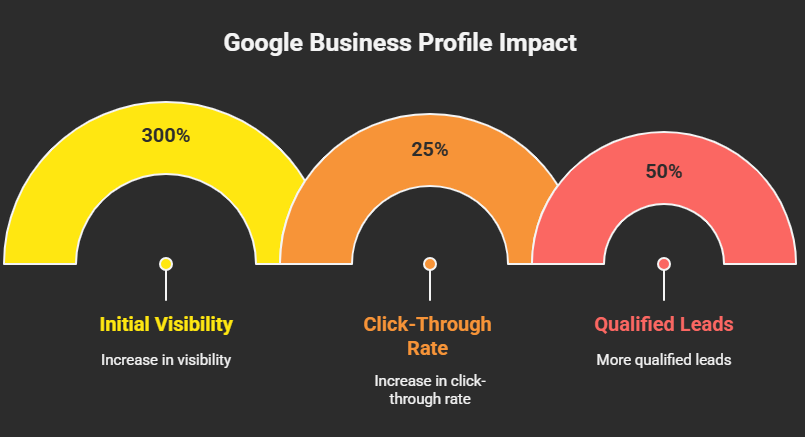
And this is conservative. Many businesses see even better results because review signals compound over time—more reviews lead to better rankings, which lead to more customers, which lead to more reviews.
The Three Biggest Mistakes I See Local Businesses Make
Mistake #1: Waiting Until You Have a Problem
Don’t wait until you get a bad review to start caring about your online reputation. By then, you’re playing defense. Build your review foundation when times are good, so you have a buffer when (not if) something goes wrong.
Mistake #2: Treating Review Management as a One-Time Project
This isn’t something you do once and forget. Google’s AI reads your reviews. Positive review sentiment and a high star rating are crucial. You need consistent, fresh reviews coming in month after month.
The businesses that win are the ones that build review generation into their customer service process permanently.
Mistake #3: Ignoring Review Platforms Beyond Google
While Google is king for local SEO, 62% of consumers rely on 2-3 sites to check online reviews when researching local businesses.
Smart businesses collect reviews across Google, Facebook, industry-specific platforms (Yelp for restaurants, Healthgrades for healthcare, etc.), and their own websites. This creates a comprehensive reputation that signals trust to both search engines and customers.
Professional reputation management services help automate review requests across multiple platforms while keeping everything centralized and manageable.
What to Do Right Now (Your 30-Day Action Plan)
If you’re serious about leveraging reviews for local SEO, here’s exactly what to do:
Week 1: Audit Your Current Situation
- Check your current Google review count and average rating
- Review your top 3 competitors’ review profiles
- Calculate the review gap (how many more reviews they have)
- Read through your existing reviews for keyword opportunities
Week 2: Set Up Your Review Generation System
- Create a direct Google review link for your business
- Build a simple email/SMS template requesting reviews
- Identify the best moments in your customer journey to ask for reviews
- Set up Google Business Profile notifications so you know immediately when reviews come in
Week 3: Start Responding to Reviews
- Respond to every review from the past 90 days (yes, even the old ones)
- Create response templates for common scenarios (positive, neutral, negative)
- Set a goal: respond to all new reviews within 24 hours
Week 4: Launch Your Review Request Campaign
- Send review requests to your 20 best recent customers
- Monitor results and adjust your approach
- Commit to sending 10-20 review requests per week moving forward
Timeline: Most businesses see ranking improvements within 60-90 days of consistent implementation. The key word is consistent.
When to Bring in Professional Help
Look, I’m all about DIY when it makes sense. But here’s when professional local SEO services actually pay for themselves:
You should get professional help when:
- You have multiple locations (managing reviews at scale requires specialized software and processes)
- You’re in a highly competitive market where your competitors are already doing sophisticated reputation management
- You don’t have 15-30 minutes daily to dedicate to review management
- You’ve received negative reviews that could significantly damage your business
- You need to integrate reviews with broader local SEO strategies (citations, Google Business Profile optimization, local content)
The breakeven math is simple: If professional reputation management and local SEO services cost you $1,500/month but bring in 3 additional customers worth $2,000 each, you’ve 4x’d your investment. Every month.





Let’s Make Your Business the Talk of the Town
Stand out in local search, earn 5-star reviews, and bring consistent traffic to your door. It starts with a powerful Local SEO strategy.
The Bottom Line: Reviews Aren’t Optional Anymore
Let me wrap this up the same way I started: Your competitors are eating your lunch because they understand that Google reviews directly influence rankings, customer trust, and revenue.
Google reviews aren’t just a nice bonus—they’re a critical part of your local SEO strategy.
The data is overwhelming:
- Reviews make up 15-16% of local rankings
- 96% of consumers read them
- 92% won’t use businesses below 4 stars
- Businesses responding to all reviews see 12% more review volume
- Review quality can increase click-through rates by 25%
This isn’t complex. But it does require consistency.
You can DIY this starting today, or you can bring in experts who’ve already built the systems and know the shortcuts. Either way, the worst decision is doing nothing.
Because while you’re “thinking about it,” your competitors are banking new customers—customers who should be yours.
Ready to Take Control of Your Local Search Rankings?
If you’re serious about dominating local search results in your market, reviews are just one piece of the puzzle. The most successful local businesses combine review management with comprehensive local SEO strategies that cover:
- Google Business Profile optimization and ongoing management
- Local citation building and NAP consistency across the web
- Location-specific content strategies that target your ideal customers
- Technical SEO that ensures Google can find and rank your business
- Ongoing performance tracking and competitive analysis
Want to see where your business stands right now? Most business owners are shocked when they discover how much opportunity they’re leaving on the table.
Professional local SEO services take the guesswork out of the equation. No more wondering if you’re doing it right. No more wasting time on tactics that don’t move the needle. Just proven strategies that get results.
The question isn’t whether reviews and local SEO matter. The question is: How much longer can you afford to let your competitors outrank you?
P.S. — If you’re still not convinced, consider this: Every day you wait to implement a review strategy is another day your competitors are building their advantage. Review signals compound over time. The businesses that start today will be dominating search results six months from now. Where will your business be?
Read also: